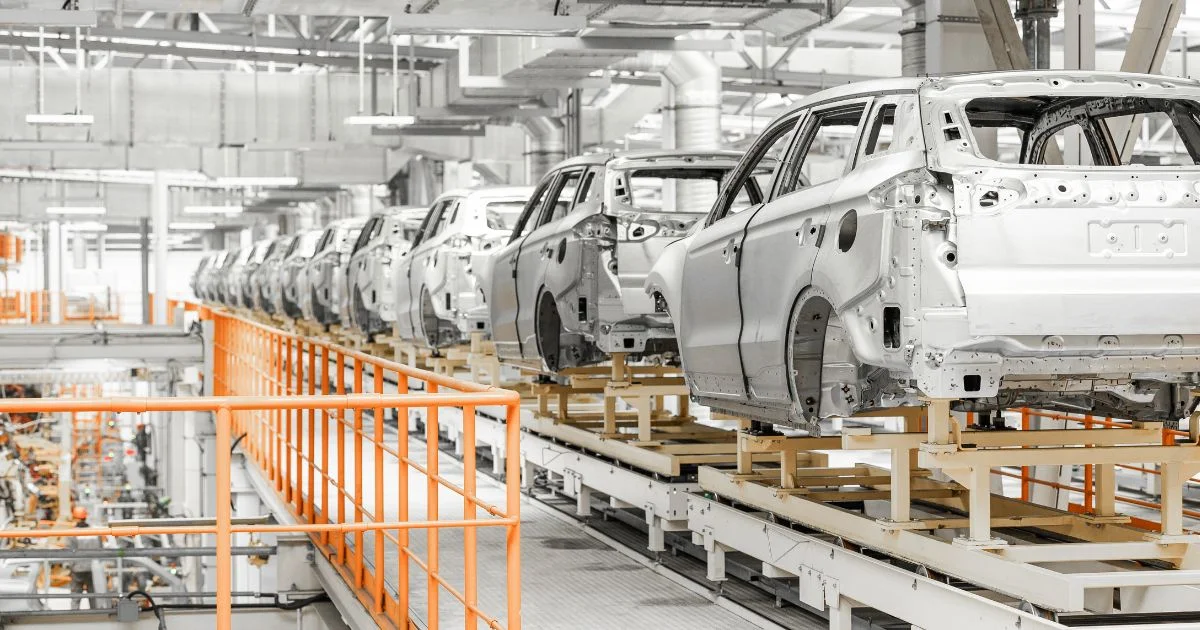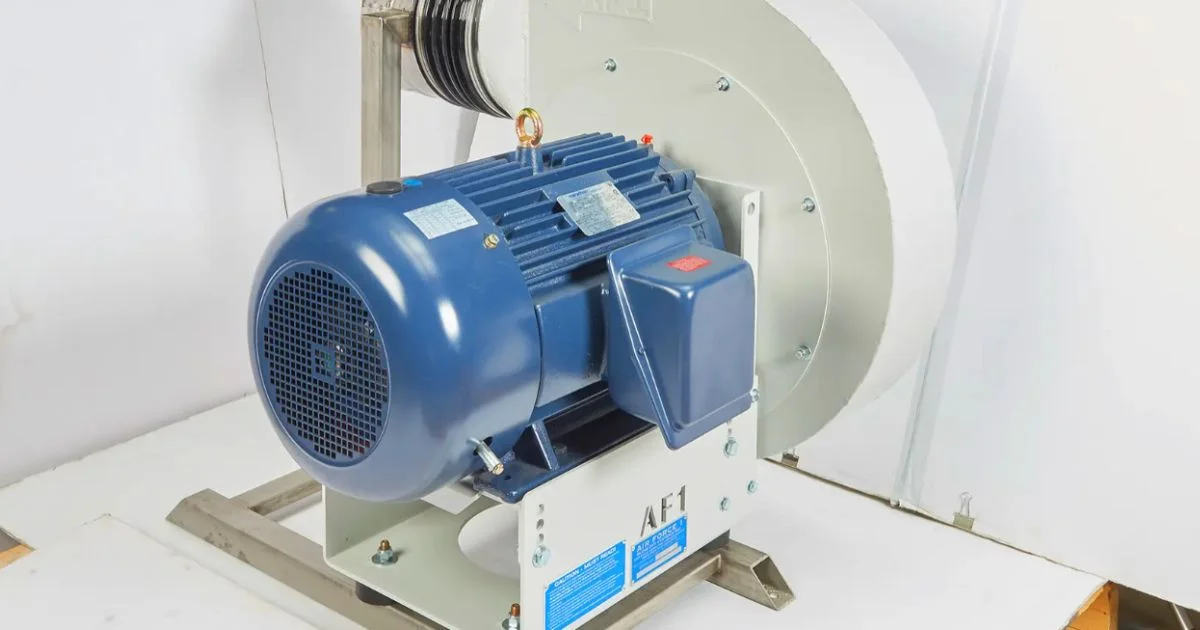
You just invested hours peening critical aerospace components. The surface treatment created exactly the fatigue resistance you need. Then you spot it: shot media wedged in every corner, thread, and recess.
That embedded shot will ruin your paint job. It'll contaminate downstream processes. Worst case? It stays hidden until assembly and causes field failures that trigger expensive recalls.
We've seen this problem shut down production lines. Teams frantically pick shot from parts by hand. The manual approach takes too long and misses particles. Washing systems can't reach tight spaces. Tumbling damages the surface you worked so hard to create.
Blow off systems solve this exact challenge. High-velocity air reaches every surface without contact. Custom nozzle configurations target the specific geometries where shot hides. You'll get completely clean parts while protecting the beneficial compressive stress from peening.
Why Shot Peening Creates a Removal Problem
Shot peening bombards metal surfaces with small spherical media at controlled velocities. The impacts create beneficial compressive stress that prevents crack initiation and growth. This process is critical in aerospace, automotive, and medical device manufacturing where fatigue failures can't be tolerated.
The problem isn't the peening itself but what gets left behind. Shot media embeds in threads, blind holes, and surface irregularities. Parts with complex geometries become collection points for tiny spheres that won't shake loose on their own.
Different shot materials create different challenges. Steel shot is magnetic, which helps with removal but also makes it attract to ferrous parts harder.
Ceramic and glass beads don't respond to magnets at all. Each material requires a specific removal approach based on its physical properties and how it interacts with your part surfaces.
Shot size matters too. Fine shot (0.007" to 0.023") hides in microscopic features, while coarse shot (0.070" and larger) wedges into larger recesses. Your removal system needs enough velocity to dislodge particles without damaging the treated surface.
Time pressure makes this worse. Production schedules don't allow for extended manual cleaning. Parts need to move quickly from peening to coating or assembly. Any shot left behind compromises quality at every downstream step.
Traditional Removal Methods Fall Short
Manual brushing can't access recessed areas where shot accumulates. Workers spend valuable time picking individual spheres from threads and pockets. This approach is slow, inconsistent, and misses embedded particles. Even experienced technicians struggle to reach shot in blind holes or complex internal passages.
Tumbling systems damage the compressive stress layer you created through peening. The mechanical action that removes shot also changes the surface characteristics, so for precision parts where specific surface conditions matter, tumbling isn't an option. You'll lose the fatigue resistance you worked to achieve.
Washing with high-pressure water reaches some hidden areas but introduces moisture that must be completely dried before coating. Water also can't generate the velocity needed to dislodge wedged shot, and the pressure required to move embedded media often exceeds safe levels for delicate part features. You end up with wet parts that still contain embedded media.
Vibration tables work for some geometries but struggle with complex parts. Shot in deep pockets or behind lips doesn't vibrate free, and the method also requires long cycle times that create production bottlenecks.
According to coating industry standards, up to 80% of coating failures can be directly attributed to inadequate surface preparation. In our experience working with manufacturers, facilities using traditional methods typically experience higher reject rates and increased warranty claims. The root cause traces back to incomplete shot removal that seemed acceptable during inspection but caused failures during service.
How Metalworking Blow Off Technology Works
Air cannon nozzles deliver focused, high-velocity air streams that dislodge shot media without surface contact. The nozzles are available in 2"- 8" standard sizes or custom configurations that match specific part geometries, with multiple outlets targeting different surfaces simultaneously for complete coverage.
The key is controlled turbulent airflow that reaches into recesses where shot hides. Unlike laminar flow air knives that work well for flat surfaces, turbulent air from cannon nozzles penetrates complex geometries. It dislodges particles from threads, blind holes, and undercuts through chaotic air movement.
Accelerator inserts increase both velocity and range without requiring higher air pressure. This design delivers more impact force where you need it while maintaining energy efficiency. The inserts can be configured for specific applications based on shot size and part geometry.
Shot removal systems integrate multiple air cannons positioned around the part for complete coverage. Strategic placement ensures every surface receives adequate airflow to remove embedded media, and the system can be designed for manual operation or automated integration into production lines.
Direct drive blowers provide the air supply, with the motor shaft connecting directly to the impeller without any belts or pulleys. This design delivers consistent pressure and flow while minimizing maintenance requirements compared to compressed air alternatives.
Working with aerospace manufacturers, we've developed mounting configurations that allow parts to rotate during blow off. This ensures complete media removal from all surfaces, including areas that would be shadowed in a fixed position.

Application-Specific Shot Removal Solutions
Aerospace components present the most demanding requirements. Turbine blades, landing gear components, and structural parts have complex curves and internal passages where shot collects. Any remaining media can cause catastrophic failures during service.
For these applications, shot removal systems use multiple air cannons positioned at precise angles. The parts often rotate on fixtures while air streams hit from different directions. This combination ensures complete cleaning of all surfaces, including areas that traditional methods miss completely.
Automotive suspension components need thorough removal before coating. Springs, control arms, and steering knuckles have recesses and mounting points where media accumulates. Incomplete removal shows up as defects in the powder coat or paint finish that compromise both appearance and corrosion protection.
Medical implants require absolute cleanliness before final processing. Any shot contamination can compromise biocompatibility or interfere with subsequent surface treatments. The removal system must verify complete cleanliness to meet strict regulatory requirements that govern medical device manufacturing.
Pipe threading operations accumulate shot in the threads themselves. These threads must be perfectly clean for proper sealing in service. Air cannons designed specifically for tubular parts deliver focused streams along the thread length while the part rotates. This ensures shot doesn't remain in the thread roots where it would prevent proper engagement.
Foundry components often have large surface areas with numerous pockets and undercuts. These parts need high-volume airflow combined with targeted streams for hidden areas. The system design balances broad coverage with focused cleaning power.
Maintenance and Cost Considerations
Air cannon nozzles require periodic inspection for wear or damage. The high velocities involved can erode nozzle edges over time. This reduces effectiveness, so regular replacement maintains optimal performance and prevents gradual degradation.
Filter maintenance keeps the system operating efficiently. Clogged filters reduce airflow and increase energy consumption. Establishing a regular replacement schedule based on operating hours prevents performance issues.
Direct drive blowers need minimal maintenance compared to belt-driven alternatives. The main requirement is routine motor inspection and bearing lubrication on the manufacturer's recommended schedule. This simplicity reduces downtime and maintenance costs.
Noise control matters in facilities where systems operate continuously. Properly designed systems with silencers maintain acceptable noise levels. OSHA workplace safety standards specify that sustained noise above 85 decibels require hearing protection. System design should minimize operator exposure.
Initial investment in blow off equipment is offset by reduced rework and warranty claims. Parts that pass final inspection with embedded shot often fail in service. This creates expensive warranty situations that complete shot removal prevents.
Labor savings add up quickly. Manual shot removal might take 10-15 minutes per part, while automated blow off reduces this to 30-60 seconds. On high-volume production, the labor savings alone can justify the equipment cost within months.
Coating quality improvements reduce defects and rework in finishing operations. Paint or powder coat applied over embedded shot creates weak spots that eventually fail. Clean surfaces ensure proper coating adhesion and long-term durability.
Production throughput increases when shot removal no longer creates bottlenecks. Faster cleaning means parts move through the facility quicker. This improves overall efficiency without adding shifts or overtime.
Smart Solutions for Consistent Results
Shot removal challenges don't have to slow your production or compromise quality. The right blow off system design removes media completely while protecting the surface properties you created through peening.
At Air Force 1, we've designed shot removal systems for aerospace, automotive, medical device, and heavy equipment manufacturers. Our engineering team develops solutions that match your specific part geometries and production requirements.
From single-station manual units to fully automated inline systems, we can configure blow off technology that solves your shot removal challenges. The systems integrate with your existing processes while delivering the thorough cleaning your parts require. Learn more about our air cannon technology for industrial applications.
Ready to eliminate shot removal bottlenecks and improve your finishing quality? Contact our team to discuss how custom air cannon configurations can solve your specific metalworking challenges. We'll analyze your parts and design a solution that delivers consistent results while improving production efficiency.

